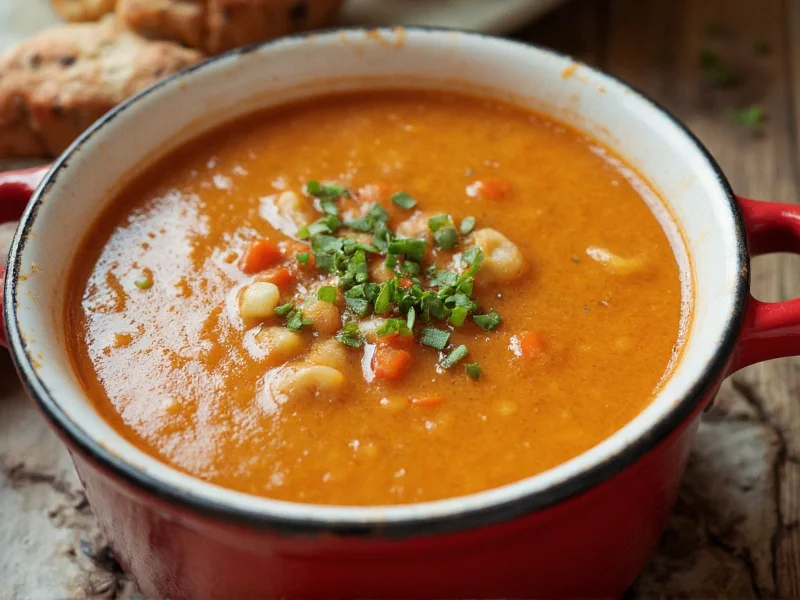Understanding the practical aspects of canned soup helps consumers make informed choices about storage, preparation, and nutritional value. This comprehensive guide explores everything you need to know about this pantry staple that has nourished households for generations.
The Evolution of Canned Soup
Canned soup emerged in the mid-19th century following Nicolas Appert's food preservation discoveries. The first commercial canned soup appeared in 1869 when John T. Dorrance, a chemist with the Campbell Soup Company, developed condensed soup. This innovation reduced shipping costs and made soup more accessible to average households. Today, the canning process involves filling sterilized cans with soup, removing air, and heat-processing to destroy microorganisms while preserving flavor and nutrients.
Nutritional Profile of Canned Soup
When evaluating the nutritional value of canned soup, several factors come into play. Most standard varieties contain between 100-200 calories per serving, with varying amounts of protein, carbohydrates, and fats. Sodium content remains a primary concern, with many traditional recipes containing 400-800mg per serving.
| Soup Type | Calories (per cup) | Protein (g) | Sodium (mg) | Fiber (g) |
|---|---|---|---|---|
| Chicken Noodle | 110 | 4 | 890 | 1 |
| Tomato | 180 | 3 | 600 | 3 |
| Vegetable | 150 | 3 | 700 | 4 |
| Cream of Mushroom | 120 | 2 | 850 | 1 |
Many manufacturers now offer low-sodium canned soup options that reduce sodium content by 25-50% without compromising flavor. Look for varieties with added vegetables and whole grains to increase nutritional density. When considering is canned soup healthy, the answer depends on specific product choices and consumption frequency.
Proper Storage and Shelf Life
Understanding how long does canned soup last is essential for food safety. Unopened cans maintain peak quality for 2-5 years when stored in a cool, dry place below 75°F (24°C). While generally safe beyond this timeframe, quality gradually declines. Check for these signs of spoilage before consumption:
- Swollen or bulging cans (indicates potential bacterial growth)
- Rust, dents, or leaks compromising the seal
- Unusual odor or appearance after opening
- Off taste or texture
Once opened, transfer unused portions to airtight containers and refrigerate. How to store opened canned soup properly ensures safety—consume within 3-4 days for best quality. Never store food in the opened can, as metal can leach into the contents.
Optimal Preparation Methods
The best way to heat canned soup preserves both flavor and nutrients. While microwaving offers convenience, stovetop heating provides more even temperature control. For condensed soups, follow the label instructions for proper water ratios. Consider these preparation tips:
- Heat gently over medium-low temperature to prevent scorching
- Stir occasionally for even heating
- Add fresh ingredients like herbs, vegetables, or proteins to enhance nutrition
- Avoid boiling for extended periods to preserve vitamin content
For those wondering canned soup vs homemade soup, consider that commercial varieties offer convenience while homemade provides customization. Many people successfully blend both approaches—using canned soup as a base and enhancing with fresh ingredients.
Common Misconceptions Addressed
Several myths persist about canned soup. Contrary to popular belief, the canning process doesn't significantly reduce nutrient content compared to fresh produce that loses nutrients during transportation and storage. Modern cans use BPA-free linings in most markets. Additionally, different types of canned soup now include organic, gluten-free, and vegetable-forward options that appeal to various dietary needs.
Practical Usage Beyond the Bowl
Canned soup serves multiple culinary purposes beyond simple consumption. Use tomato-based varieties as pasta sauce foundations, cream soups as bases for casseroles, and broth-based options for cooking grains. These creative applications maximize the practical value of canned soup in meal preparation while reducing food waste.











 浙公网安备
33010002000092号
浙公网安备
33010002000092号 浙B2-20120091-4
浙B2-20120091-4